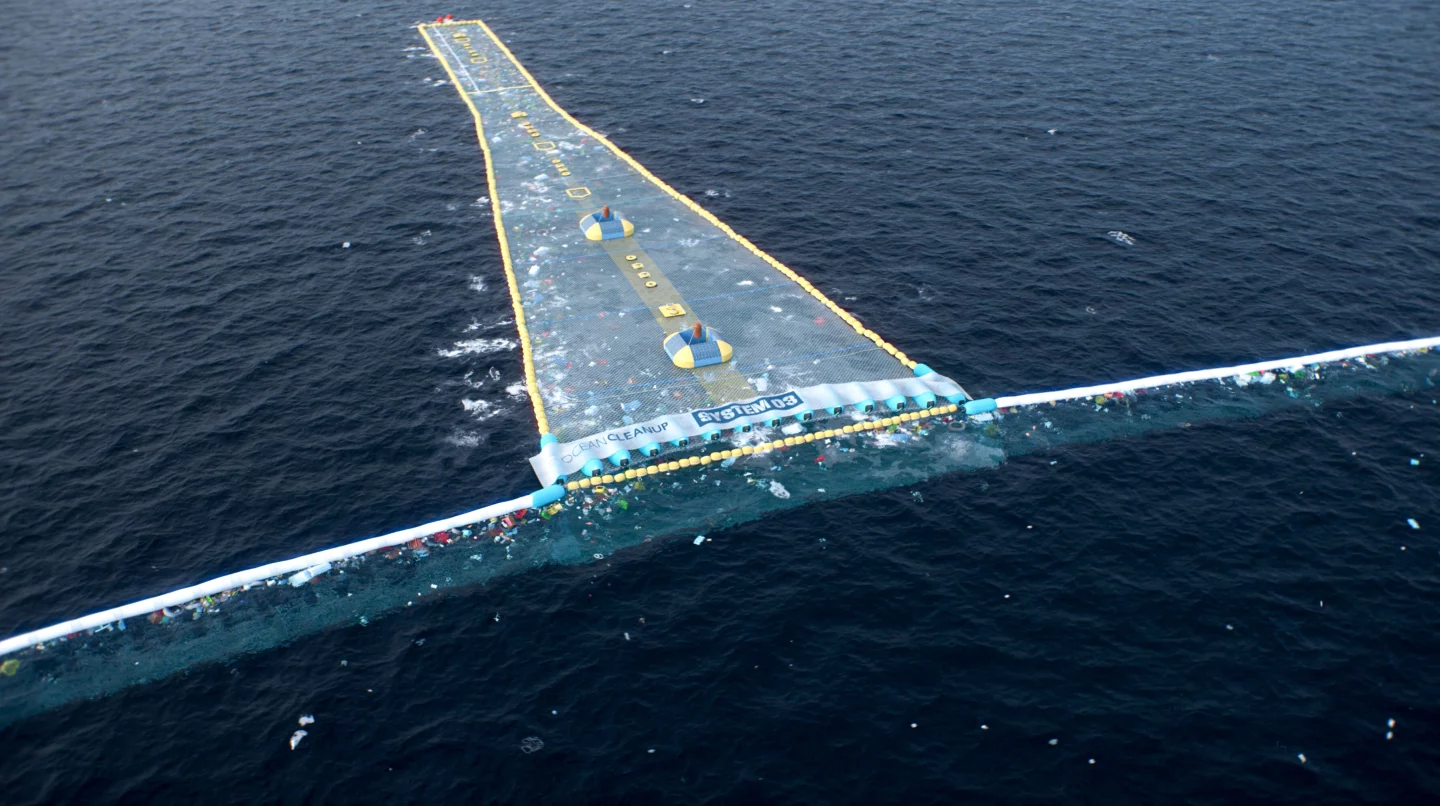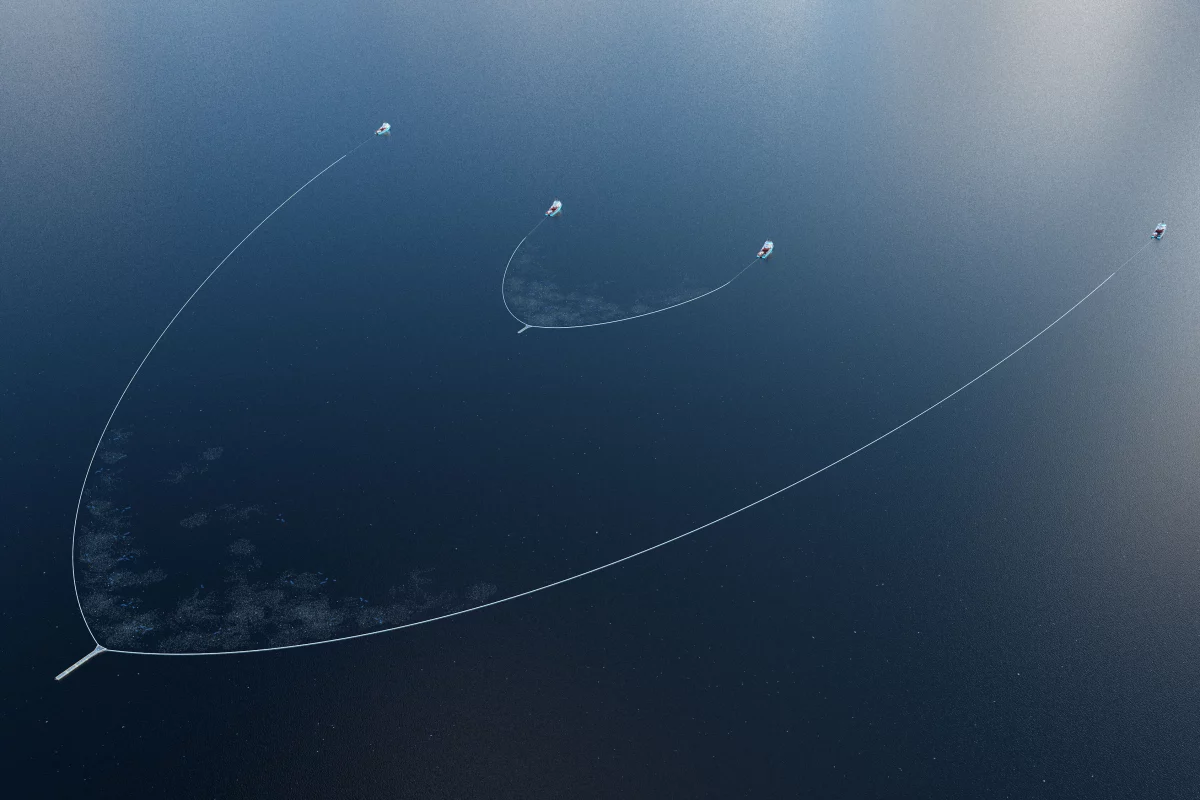The Ocean Cleanup has a huge task on its hands in ridding the seas of plastic waste, but a sleek new video offers a compelling look at its latest plan of attack. The animation shows massive trash-collection barriers sweeping through the Great Pacific Garbage Patch with great efficiency, with the company envisioning 10 of these systems would be enough to put a serious dent in the problem.
After first introducing the idea back in 2013, The Ocean Cleanup team has developed and tested various iterations of its giant trash-collecting barriers. Its plans involve deploying these in the Great Pacific Garbage Patch to gather up plastic debris, and last year proved the viability of this approach with a massive haul.
It is currently in the midst of transitioning from the System 002 barrier used in that early operational mission to a much larger System 003. These new U-shaped barriers will measure 2,500 m (8,200 ft) long and will be towed by boats, using a 4-m-deep (13-ft) skirt to funnel plastic waste from the surface into a collection chamber. This waste is then pulled up onto support vessels and taken back to shore.

The larger system is expected to make the cleanup more efficient and economical, with a lower cost per kilogram of plastic waste removed from the waters. According to its latest projections, The Ocean Cleanup team expects that 10 barriers based on the System 003 design would be enough to scoop up the entire 100,000 tonnes of plastic in the Great Pacific Garbage Patch.
The video below demonstrates how this would take place, and it’s well worth a look. It artfully depicts the scale of the problem and the way The Ocean Cleanup plans to solve it, with interesting technical details woven throughout, such as the use of drones to identify plastic hotspots in the patch. Check it out below.
Source: The Ocean Cleanup





